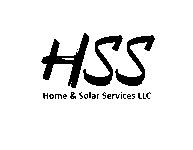Texas Standard of Practices for Home Inspection
22 TAC §§ 535.227 – 535.233
The Texas Real Estate Commission (TREC) Standards of Practice (SOP) outline “THE LIMITATIONS” of real estate inspections in Texas. Here are some key general limitations:
Scope of Home Inspection – Inspectors are not required to inspect items beyond those listed in the SOP, such as elevators, detached buildings, docks, fences, or waterfront structures.
Hidden or Buried Items – Anything concealed, latent, or buried (like sub-surface drainage systems) is not required to be inspected.
Specialized Equipment – Inspections do not require tools like thermal imaging cameras, moisture meters, gas detectors, or drones.
Environmental Hazards – Inspectors are not responsible for determining the presence of asbestos, lead-based paint, mold, or other environmental hazards.
Future Conditions – They are not required to anticipate future deterioration, performance changes, or consequences of the inspection.
Cosmetic Issues – Inspectors do not report on aesthetic conditions or normal wear and tear.
Specialist Services – They do not provide engineering, architectural, or appraisal services.
General Limitations
The inspector is not required to:
- (1) inspect:
- (A) items other than those listed within these standards of practice;
- (B) elevators;
- (C) detached buildings, decks, docks, fences, waterfront structures, or related equipment;
- (D) anything buried, hidden, latent, or concealed;
- (E) sub-surface drainage systems;
- (F) automated or programmable control systems, automatic shutoff, photoelectric sensors, timers, clocks, metering devices, signal lights, lightning arrestor system, remote controls, security or data distribution systems, solar panels or smart home automation components; or
- (G) concrete flatwork such as driveways, sidewalks, walkways, paving stones or patios;
- (2) report:
- (A) past repairs that appear to be effective and workmanlike except as specifically required by these standards;
- (B) cosmetic or aesthetic conditions; or
- (C) wear and tear from ordinary use;
- (3) determine:
- (A) the presence or absence of pests, termites, or other wood-destroying insects or organisms;
- (B) the presence, absence, or risk of:
- (i) asbestos;
- (ii) lead-based paint;
- (iii) mold, mildew;
- (iv) corrosive or contaminated drywall “Chinese Drywall”; or
- (v) any other environmental hazard, environmental pathogen, carcinogen, toxin, mycotoxin, pollutant, fungal presence or activity, or poison;
- (C) types of wood or preservative treatment and fastener compatibility;
- (D) the cause or source of a condition;
- (E) the cause or effect of deficiencies; or
- (F) any of the following issues concerning a system or component:
- (i) insurability or warrantability;
- (ii) suitability, adequacy, compatibility, capacity, reliability, marketability, or operating costs;
- (iii) recalls, counterfeit products, or product lawsuits;
- (iv) life expectancy or age;
- (v) energy efficiency, vapor barriers, or thermostatic performance;
- (vi) compliance with any code, listing, testing or protocol authority;
- (vii) utility sources; or
- (viii) manufacturer or regulatory requirements, except as specifically required by these standards;
- (4) anticipate future events or conditions, including but not limited to:
- (A) decay, deterioration, or damage that may occur after the inspection;
- (B) deficiencies from abuse, misuse or lack of use;
- (C) changes in performance of any component or system due to changes in use or occupancy;
- (D) the consequences of the inspection or its effects on current or future buyers and sellers;
- (E) common household accidents, personal injury, or death;
- (F) the presence of water penetrations; or
- (G) future performance of any item;
- (5) operate shutoff, safety, stop, pressure or pressure-regulating valves or items requiring the use of codes, keys, combinations, or similar devices;
- (6) designate conditions as safe;
- (7) recommend or provide engineering, architectural, appraisal, mitigation, physical surveying, realty, or other specialist services;
- (8) review historical records, installation instructions, repair plans, cost estimates, disclosure documents, or other reports;
- (9) verify sizing, efficiency, or adequacy of the ground surface drainage system;
- (10) verify sizing, efficiency, or adequacy of the gutter and downspout system;
- (11) operate recirculation or sump pumps;
- (12) remedy conditions preventing inspection of any item;
- (13) apply open flame or light a pilot to operate any appliance;
- (14) turn on decommissioned equipment, systems or utility services; or
- (15) provide repair cost estimates, recommendations, or re-inspection services.
